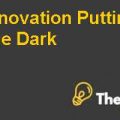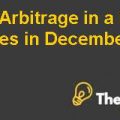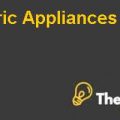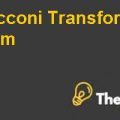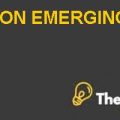Star Appliance Company Case Study Solution
Discount Factor Methodology
The discount factor that the company currently use is its hurdle rate which is found under the Discount Factor Methodology of GGM that is 10%. However, the company can consider other discount factor methodologies to find its discount factor. These methodologies include CAPM approach to find cost of equity considering stock beta, the WACC approach to find the company’s weighted average cost of capital considering the cost of debt and equity. Exhibit B shows the Summary of various methodologies for Star appliance.
It could be seen that the company has the highest discount factor under the CAPM approach followed by the WACC. The difference between the discount factor currently used and the other discount factor is huge, showing higher risks attached with the NPV calculated on 10% discount factor.
Questions in Case
- Although the company is less risky due to its 100% equity financing, but its hurdle rate should be more than the current level to compensate the other factors like poor projections and expected values, investments which bring no returns etc., which can impact the projected results.
2.Inflation rate was not properly adjusted in company. The hurdle rate used was the current cost of capital or equity rate which only considers the dividend growth rate and the current price of the dividend.
- The company should leave the project like food disposal which has an IRR less than the hurdle rate. It should keep a safety margin above IRR of at least 5% to compensate other factors. It should also increase hurdle rate and use an aggressive discount factor methodology to compensate poor forecasts and other factors.
- It should also increase its hurdle rate to compensate the investments which do not bring returns to the company.
- It should use an aggressive hurdle to compensate the higher risks attached with different project in-spite of using different hurdle rates which can create confusion for the company and could lead to higher time and resource wastage.
Conclusion
On the basis of above analysis the company is recommended Dishwasher and Trash Compactor projects, as both have a positive NPV and an IRR greater than the hurdle rate.It should raise its funds using equity and debt both, as the company is growing and the cost of debt is less than the cost of equity due to tax shield, which would increase the profits of the company. However it should set an optimal capital structure to manage risk. The company should make its optimal capital structure with 70% debt and 30% equity to reduce its WACC. The amount that should be raised using debt to reach optimal capital structure is $105384 (see Exhibit C).
Exhibits
Exhibit A: Summary of NPV and IRR
| NPV | IRR | IRR>Hurdle? | |
| Dishwasher | $ 39,342 | 24% | Yes |
| Food Waste Disposal | $ -2,199 | 9% | No |
| Trash Compactor | $ 12,559 | 17% | Yes |
Exhibit B: Discount Factor Methodology
| Beta | |
| Levered | 1.686265 |
| Unlevered | 1.546786 |
| CAPM | 21.37% |
| GGM (Current) | 10% |
| WACC (based on debt to total asset ratio 14%) | 19% |
Exhibit C: Debt Amount Calculations
| Calculations for Debt Amount | ||||||
| Equity Ratio Current | 82% | |||||
| Optimal Equity Ratio | 30% | |||||
| Amount of debt should be acquired | $ 105,384 | |||||
This is just a sample partical work. Please place the order on the website to get your own originally done case solution.

